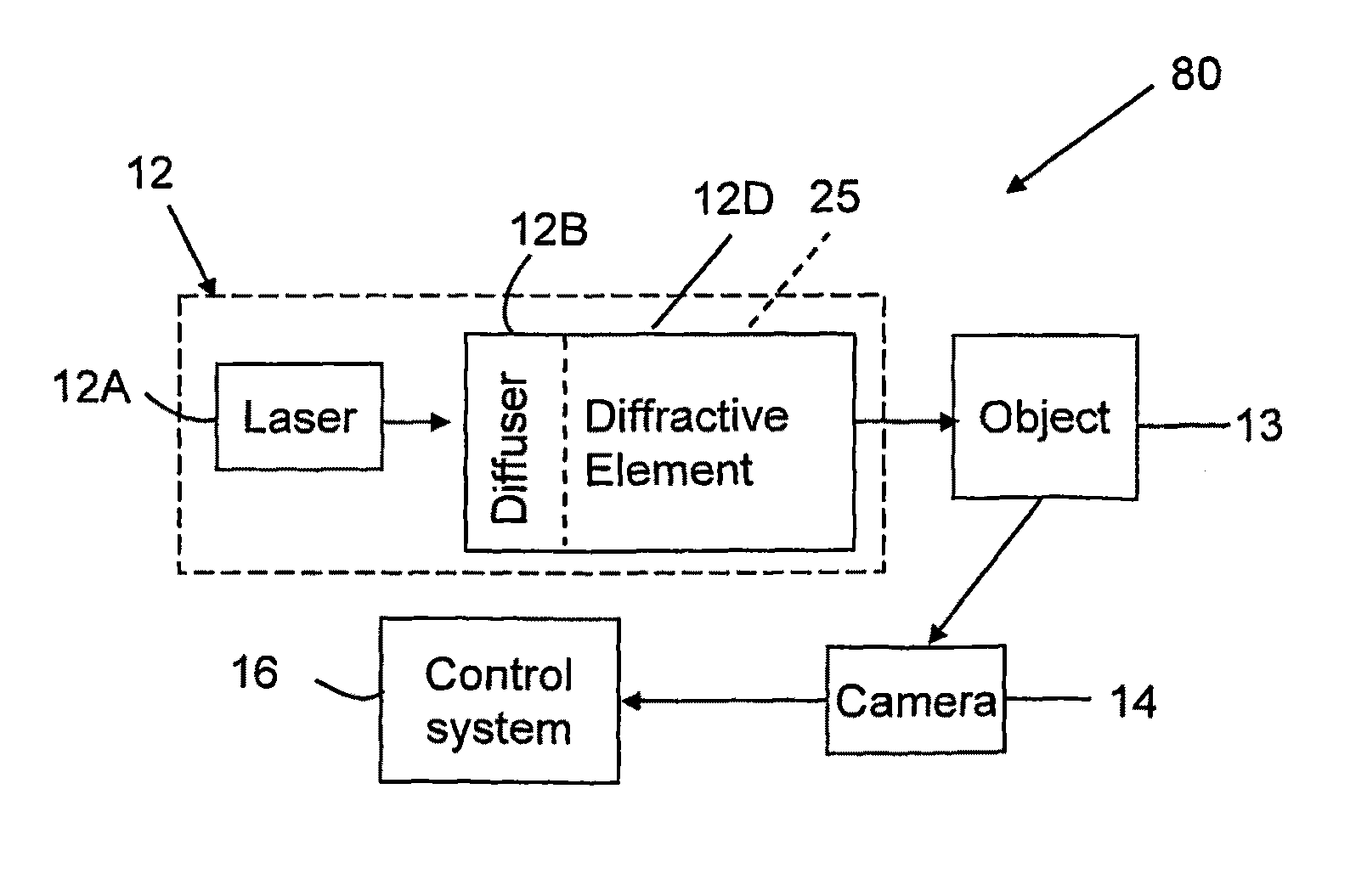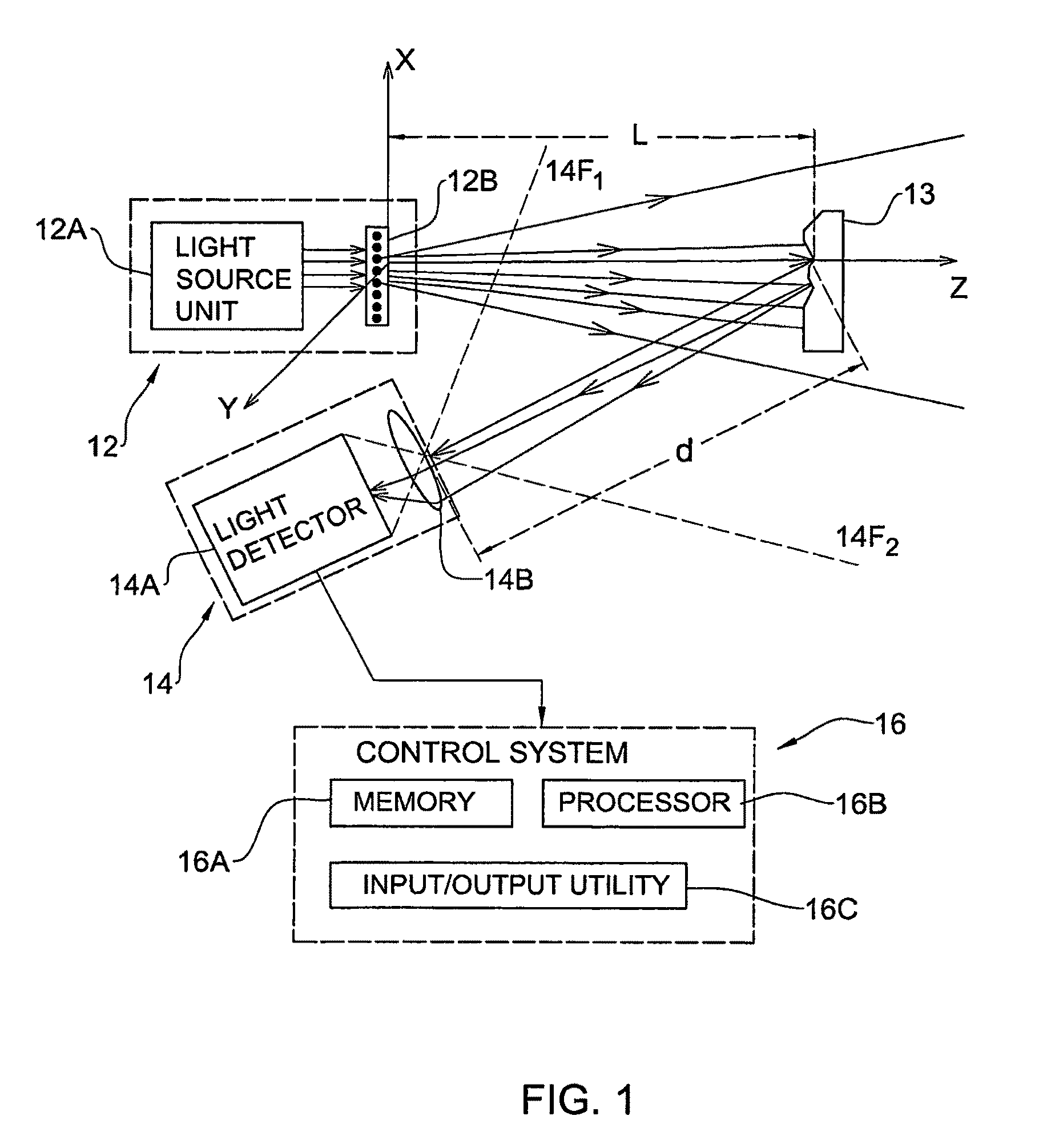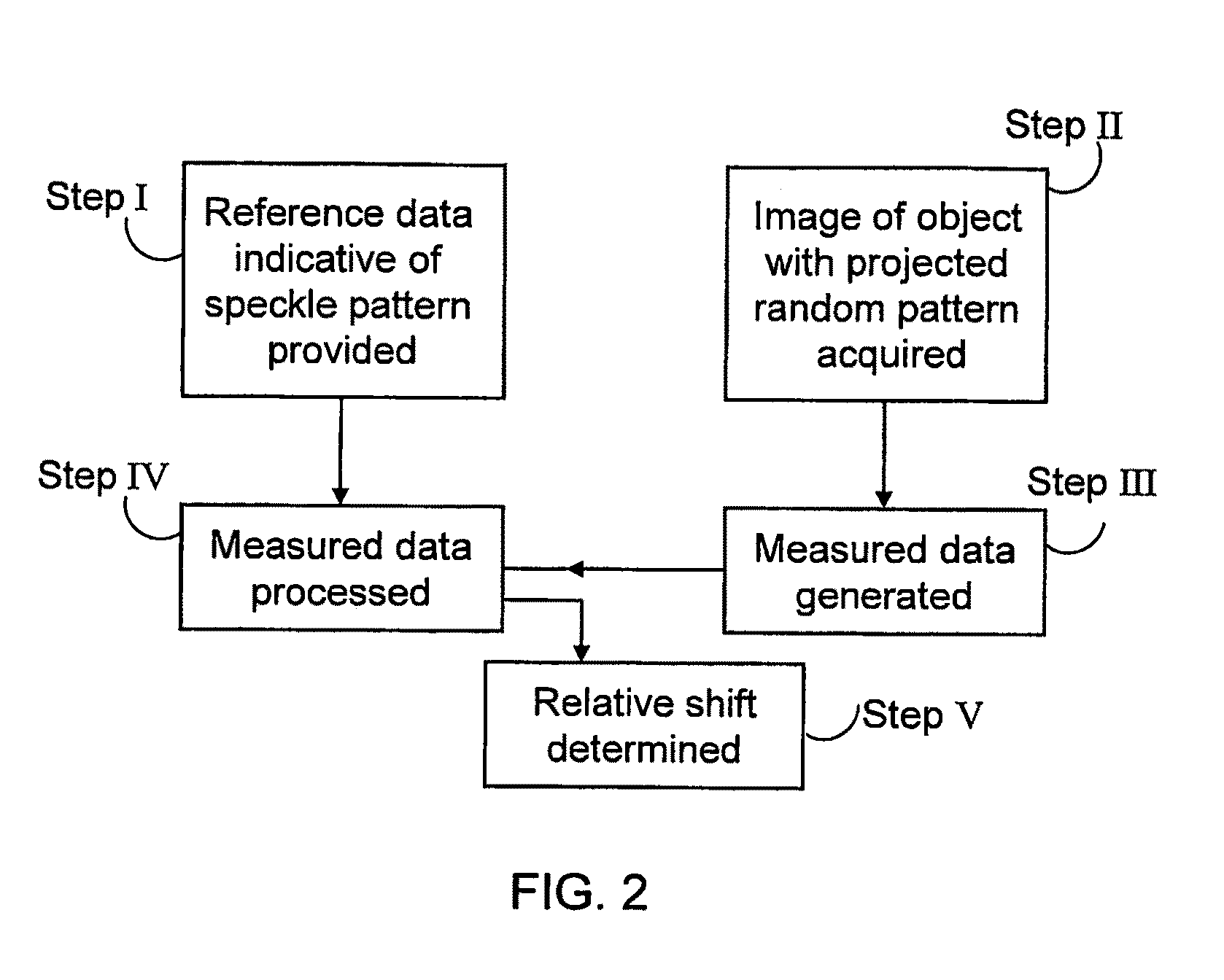Method and system for object reconstruction
a technology of object reconstruction and object data, applied in the field of method and system for object reconstruction, can solve the problems of low 3-d resolution, inability to provide real-time mapping of objects, and the 3d information obtained usually contains only relatively sparse samples, and achieves simple and inexpensive optical setup and facilitates object reconstruction.
- Summary
- Abstract
- Description
- Claims
- Application Information
AI Technical Summary
Benefits of technology
Problems solved by technology
Method used
Image
Examples
Embodiment Construction
[0055]Referring to FIG. 1, there is schematically illustrated an example of a system 10 of the present invention for use in 3-D mapping of objects. System 10 is an optical mapping system including an illuminating unit 12 configured to project a random speckle pattern (preferably constant pattern) onto an object 13; and an imaging device 14.
[0056]Illuminating unit 12 includes a coherent light source 12A, and a generator 12B of a constant random speckle pattern accommodated in the optical path of illuminating light, preferably very close (e.g., up to a physical contact) to the light source output. Light source 12A may be constituted by a light emitting assembly (laser) and / or by a light guiding arrangement (e.g., optical fiber) associated with a remote light emitting assembly. Pattern generator 12B is a light diffuser, for example a ground glass.
[0057]Imaging device 14 includes alight detector 14A (a pixel matrix, e.g., CCD) equipped with an imaging lens arrangement 14B. The latter ma...
PUM
 Login to View More
Login to View More Abstract
Description
Claims
Application Information
 Login to View More
Login to View More - R&D
- Intellectual Property
- Life Sciences
- Materials
- Tech Scout
- Unparalleled Data Quality
- Higher Quality Content
- 60% Fewer Hallucinations
Browse by: Latest US Patents, China's latest patents, Technical Efficacy Thesaurus, Application Domain, Technology Topic, Popular Technical Reports.
© 2025 PatSnap. All rights reserved.Legal|Privacy policy|Modern Slavery Act Transparency Statement|Sitemap|About US| Contact US: help@patsnap.com



